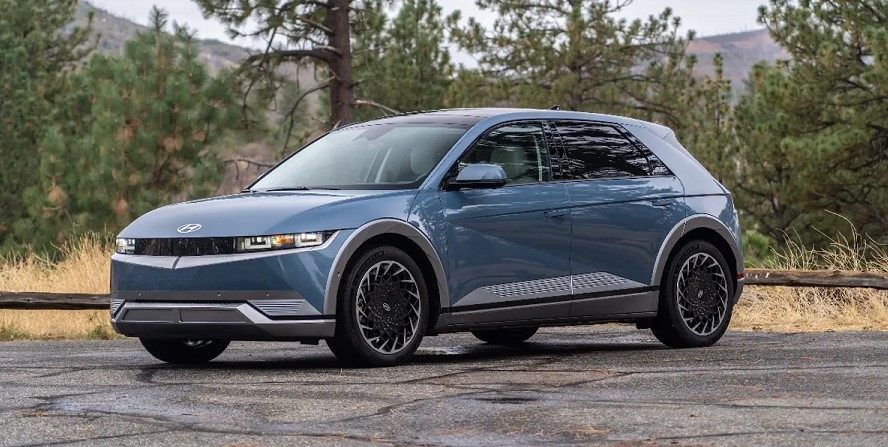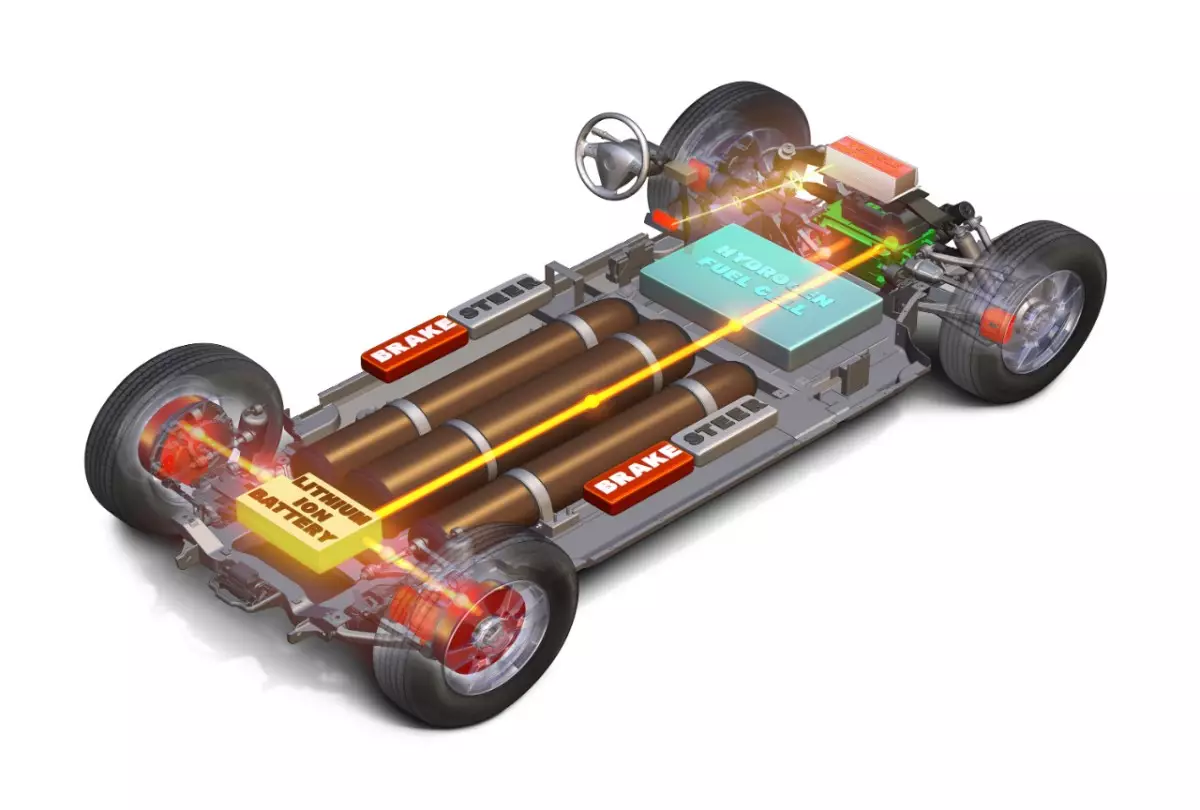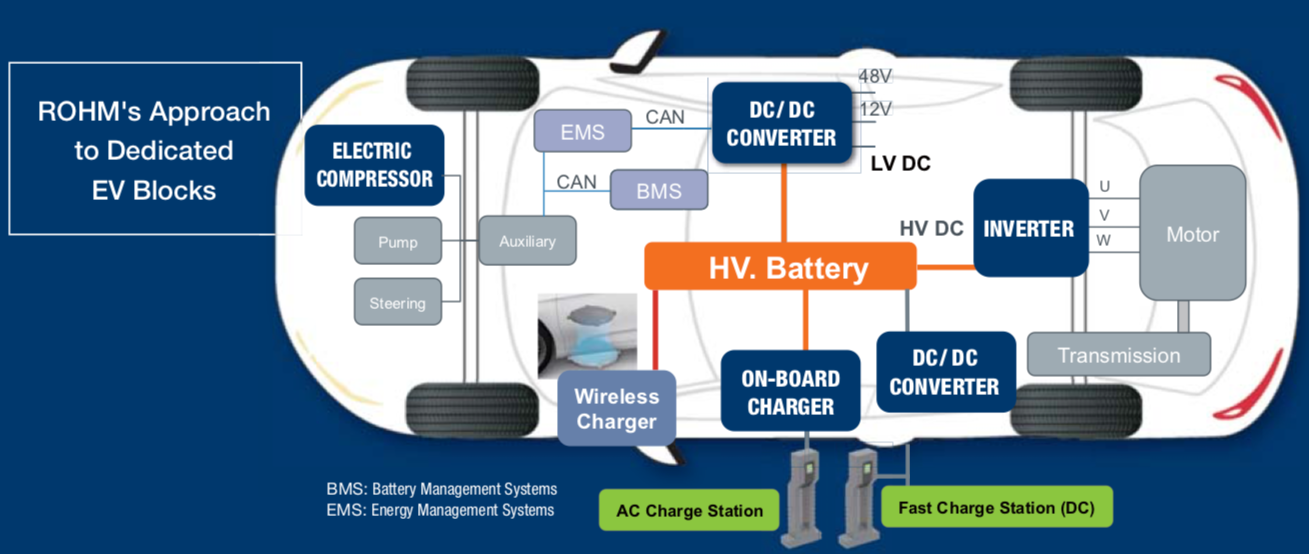In recent years, electric cars have become the fresh wave of automotive evolution. But, even if they’re powered differently, do they continue to have alternators? This page contains research to help you answer this issue.
Alternators are not used in electric cars such as Tesla. They use DC to DC converters to power the 12v battery instead. As a result, electric vehicles do not require an alternator. Understanding why don’t electric cars have alternators might be perplexing.
The purpose of this article is to explain why electric cars do not have alternators. Furthermore, we will address and answer additional commonly asked questions concerning this topic, so keep reading!

The reasons why don’t electric cars have alternators
How does an alternator work? Electric cars have been designed from the ground up to eliminate the need for a combustion engine. Alternators are essential in order for the vehicle to function properly, and must be connected to the engine via the crankshaft.

Within the drive shaft, there are either magnets or coils of copper wire with a small DC current flowing through them. This is what is known as AC (Alternating Current). By using diodes, the AC is converted to DC (Direct Current).
The output voltage is regulated and charges the vehicle’s 12V battery.
An alternator’s primary function is to convert waste rotating energy into electrical energy. ICE (Internal Combustion Engine) has high rotational energy, which is perfect for powering the vehicle. This isn’t the case with electric cars.
Most electric cars are designed to maximize rotational energy and eliminate wasted power conversion. Electric vehicle makers have assured a high level of efficiency. Their primary goal is to reduce carbon emissions and increase the use of renewable energy sources.
As a result, one of its important components is waste reduction. Energy conversion via an alternator is inefficient. Energy is wasted during the conversion, which contradicts the energy-saving design of electric cars.
As a result, alternators would be unsuitable for use on electric cars. Heat, vibration, and noise cause the alternator to lose 40% to 45% of its electrical energy.
Electric cars have enough electrical energy to operate. All-electric vehicles have an electric motor instead of an internal combustion engine. The vehicle uses a large traction battery pack to power the electric motor and must be plugged into a wall outlet.
Because it runs on electricity, the vehicle emits no exhaust from a tailpipe and does not contain liquid fuel components.
Alternators would cause inefficiencies in electric vehicles. Another major reason why such an electric motor does not require alternators is its efficiency. These vehicles are powered by electricity. As a result, utilizing electricity to generate electrical energy is a waste of power.
As a result, the device would introduce unneeded inefficiencies. An alternator charges the 12V battery. In the case of electric automobiles, this isn’t a big deal because these vehicles have a more efficient method of keeping the battery full.
A DC-to-DC converter replaces the requirement for an alternator in electric cars. Electric cars use an electric motor instead of ICE. The device transfers power from the primary rechargeable battery to the 12 v battery. As a result, an alternator is unnecessary.
Electric cars don’t have an engine. A motor would power a gadget that generates electricity, which is illogical. Using the engine to generate electricity would consume more energy than it produces. If the alternator can generate more power, it would produce perpetual motion, which electric cars do not require.
The electric car battery in electric cars only has about 300 volts, and a 12-volt system is required for the radio, lamps, and other electrical accessories. Alternators are a costly way of transforming energy from one type to another.
Mechanical energy created in an electric vehicle just needs to be converted from one voltage to the other. The great news is that these cars can do it with a voltage control circuit in a far simpler and less expensive manner. Because they do not waste energy, DC converters are more efficient than alternators.
While all these converters need a flow to convert electrical energy, the lack of vibration and noise reduces losses. They also include a conditioning system to reduce energy loss due to heat.
DC converters require less maintenance than alternators. In electric vehicles, DC converters are commonly used to transform kinetic energy into the needed voltage. They are preferred by EV makers over alternators because they need less maintenance. Alternators are bulkier and heavier than these devices.
They lack moving parts, which are susceptible to deterioration and would necessitate regular maintenance. Hence. Because they are not present, your vehicle’s DC converter will require little maintenance. Employing alternators on electric cars would be difficult, resulting in increased installation expenses.
They demand a lot of upkeep and aren’t the best option. EVs strive to improve sustainability, something alternators cannot do. Nobody wants to pay extra money for car maintenance, which makes EVs an excellent choice of vehicle.

The regenerative braking system utilizes additional energy
Internal combustion engines in cars generate a large amount of kinetic energy that is not used by the vehicle. Electric vehicles, on the other hand, generate all of their rotational energy in the tires as they slow down.
Electric car manufacturers were aware of the potential for energy waste throughout this operation. They did, however, use the concept of fuel cells to use the excess energy.
The concept extends the range of the vehicle by lowering the energy demands on the electric motor.
Regenerative braking captures and converts waste rotational energy when the vehicle is slowing down. The energy is then returned to the batteries for further use in driving.
Electric car drive wheel motors rotate in two directions to allow for regenerative braking. When you press on the accelerator, the motor turns forward, forcing the wheels to go forward.

Do electric car batteries charge while driving?
Sadly, the batteries in electric cars cannot be charged while they are being driven. In essence, the electric car battery packs are connected to the vehicle as a load.
This indicates that the only ways the batteries can be charged are by being tucked in and receiving electricity from an outside source or by utilizing regenerative braking.
Another distinction between a DC converter and an alternator is that the former produces electricity. While you are driving, the alternator will keep the 12V battery charged. However, if you run out of energy, the car will stop running.
Electric vehicles do lose a small amount of charge when they are parked. The battery is still recharging other car parts even though the car isn’t being driven. The battery loses very little power when it is stationary, so there is no cause for concern.
Driving an electric vehicle will primarily drain its battery. Don’t stress if you have to spend a few hours relaxing in the park because you won’t lose much driving distance. Parasitic drag is utilized when the car uses more energy while it is stationary.
This means that even though the car is not being used, the battery of an electric vehicle that is parked for a long period [over 24 hours] will gradually become less charged.
The battery of an electric vehicle is totally dead when the charge runs out. While this might appear to be a negative idea, it actually isn’t because the drivers only need to connect to their car to recharge the batteries and then use them once more.
However, you will need to have the car towed if there isn’t a charging station nearby. The reason for this is that, unlike a gas station, a charging station cannot be brought to you. For this reason, it’s crucial to check your electric vehicle’s charge before leaving the house.

Electric car charging
In reality, you shouldn’t start charging your electric vehicle every evening. Instead, experts advise driving your autonomous engine as often as possible while it is between 20% and 80% charged.
Your electric car’s battery life will be shortened if you charge it completely every night. Only when you have a long road trip should you charge your electric car.
Depending on the type and level of charger you have, charging your electric vehicle will take many hours. Fortunately, most chargers can power up your car using a charging station.
Most electric vehicles may be charged either using 220 or 110-volt electrical outlets, which will necessitate the installation of appropriate equipment in the home.
However, if you want convenience and speed, Tesla’s Superchargers are the best option.
The Tesla Supercharger is the quickest way to recharge your car for a long drive.
For example, this can recharge a typical Tesla automobile in around an hour. Tesla Superchargers can be found in almost every state in the United States and Canada.
Portable electric chargers are available for electric vehicles. They function similarly to charging your automobile, except they can be used anywhere. A portable charger, for example, would be great if your electric car does not have access to a 220-volt outlet.
You must verify that the charger’s power matches that of your automobile and that it is not left on overnight. Companies such as Blink and ZipCharge make portable chargers.
Both of these businesses have their own fully electric chargers, which are ideal if you do not wish to rely solely on home charging equipment or charging stations.
On a full charge, most electric vehicles can travel 250 miles. This is so that most people can use their cars to get around a big city or close enough to their homes to recharge their cars at home overnight.
Only a small number of electric cars, like the Tesla models, have a range of more than 300 miles. These vehicles are typically used for longer trips, but they are not necessary for the daily commute of the average person.

Should I get an electric car?
An electric automobile is ideal for someone who wants to drive fewer than 300 miles each week. If you rarely take long road trips in your vehicle, an electric vehicle is ideal! Electric vehicles are ideal for consumers who wish to save gas money while also reducing pollution.
You may charge your electric car for free at home. There is also the opportunity to charge at one of your city’s many charging stations, as well as at Tesla’s Superchargers.
However, if you take a lot of long drives, the charge time of an electric automobile is a disadvantage. An electric car cannot be driven for extended distances without being charged. Furthermore, you will have to wait about an hour to charge your vehicle.
Although electric vehicles can be operated in the snow, the cold weather has an effect on the batteries. In a nutshell, cooler weather will reduce the driving range of an electric vehicle.
Furthermore, electric vehicles have quick torque at 0 rpm, which would be inconvenient on slick and icy roads.
In general, you should avoid driving an electric vehicle in heavy snow and temperatures below 40 degrees.
Always check the weather forecast before getting in your car. If you want to drive your electric car on ice, you should have winter tires and do it when the weather is mild.

What do reviews say?
Electric cars can charge up enough power in battery packs without needing an alternator. Alternators use energy to provide similar power, thus being wasted. Different charging ports provide enough charging within certain times of use for charging vehicles.

Conclusion
An alternator is a dependable device that converts rotational energy to electric energy. Using them in electric vehicles would introduce significant inefficiencies, reducing the vehicle’s effectiveness.
So, why don’t electric cars have alternators? Electric cars do not have an alternator, they use a DC/DC converter to charge their batteries. Electric cars are also more environmentally friendly than gas-powered and gasoline cars because they don’t pollute the air and water.

Frequently Asked Questions
Why do electric cars not have alternators?
There are two good reasons why electric cars have never had alternators: first, since EVs lack engines, an alternator wouldn’t have a source of power.
The rechargeable battery of an electric vehicle could be used to turn the alternator, but doing so would be counterproductive because it would consume more energy than it produced.
Why isn’t there an alternator on Tesla?
A Tesla has no alternator since they have electricity in the engine. Electrical vehicles have DC converters that charge the drive system with the electricity in the battery.
It differs from a motor, which generates electric electricity and uses mechanical energy for its operation.
Can an electric car charge itself with an alternator?
No. Because energy transformations are never completely efficient, we lose some energy every time we transfer one type of energy to another. Through regenerative braking, hybrids and electric vehicles return some of their energy to the battery.

